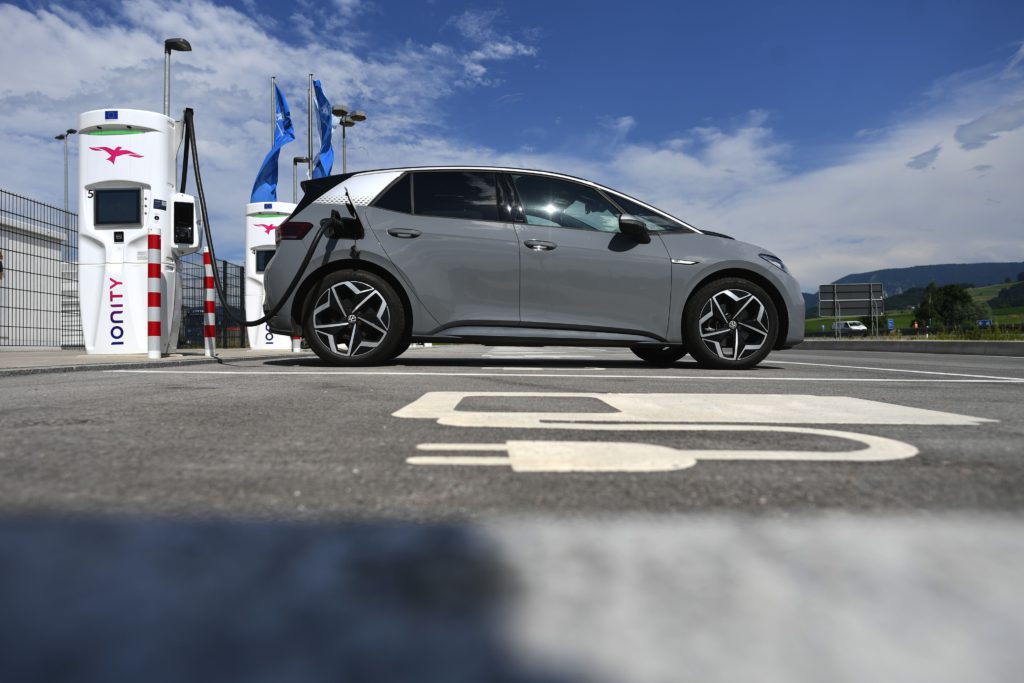The amount of money deployed indicates an ability to address systemic industry challenges and opens up access to low-cost capital.
(Bloomberg) — BloombergNEF recently released its updated Zero-Emission Vehicles Factbook, which estimates cumulative investment in EV charging hardware and installation will reach $62 billion at the end of this year, with $28.6 billion having been invested just in 2022, up 228% from the year before. Of the total investment in 2022, 61% is attributed to more than 600,000 public chargers built in China.
Cumulative investment globally probably will pass the $100 billion mark in 2023 if China keeps up its relentless pace. It’s a milestone that hints at the transition to a new phase of the EV charging sector lifecycle. As Jigar Shah at the US Loans Program puts it, $100 billion of deployed capital indicates an ability to address systemic industry challenges and opens up access to low-cost capital that’s required to ultimately reach $1 trillion scale.
There are many signs the transition is underway. Factories are scaling up and purchase commitments are increasing. There’s an influx of infrastructure investors and coordination across the charging ecosystem, with automotive, charging, utility and retail sectors working together.
This article takes a stab at breaking out the stages in the charging industry lifecycle. Feel free to hit me up with your versions!
EV charging 1.0 and 2.0
I put the dawn of the first stage around 2010, when the Nissan Leaf launched.
That stage ended and the second phase began around 2019, when the industry hit new scale. The public charging network, while still relatively sparse, came into meaningful existence and charging speeds were boosted. Tesla was more or less a lone performer up to this point, with around 12,000 superchargers globally and 120 kilowatt max charging speeds.
Over the next few years, Ionity and others started putting 350 kW stations in the ground, and most new EVs started coming with 100kW+ charging. The supply chain is quite localized, though, with individual companies winning out in each country. Profitability is out of reach for nearly all charging companies, and widespread issues of reliability — from technology to operational processes — still exist.
EV charging 2.5 to 3.0
This brings us to present day, or close enough.
Encouraged by strong EV adoption, increasing network utilization and an understanding of the monopolistic nature of the industry, we have seen a raft of announcements from infrastructure investors coming into the industry, oil majors, utilities, charging companies and automakers, all committing to install millions of chargers. Multibillion-dollar commitments from governments are starting to come to fruition, and they’re putting in more safeguards when delivering funding to ensure network reliability.
Unit economics should start to increase with factories scaling up, such as Wallbox’s plant in Texas, which will have the ability to produce 1 million chargers annually by 2030. Shell has signed contract agreements with companies ranging from Swedish-Swiss multinational ABB to lesser-known companies like Taiwanese manufacturer Phihong. Chinese suppliers, whose chargers can be as cheap as 30% of ones produced in the US and EU, also will be looking to expand globally.
Public charging companies are reaching new scale, delivering delivering hundreds to thousands of gigawatt-hours of electricity, ranking them among the top-consuming electricity companies in the world. TGood, the biggest charging operator in China, distributed 4 terawatt-hours last year, compared to 15 TWh for Alphabet and 24 TWh for Amazon.
Public charging operators Allego and Electrify America recently have signed power purchase agreements for cheap clean energy. This advancement highlights the wider alignment of players in the charging ecosystem, from charging companies to utilities, as well as developers, automakers and retailers. EV charging is becoming more integrated into the electricity system and will be one of the largest forms of flexibility for grid operators. It’s also becoming more central to core business offerings (will we see charging via Amazon Prime, perhaps?)
Don’t be surprised to see a further boom in the number of charging companies before consolidation. Companies must survive the current economic downturn, and some will also have to wean themselves off government subsidies. This could be an issue for home-charging companies in Germany and the UK, in particular, where subsidies have been removed.
EV charging 4.0
Between 2030 and 2035, electric vehicles will make up 15% to 33% of the passenger vehicle fleet in Europe and the US, and EV charging will be truly mass market.
Big Oil will have to have become Big Energy as a slowdown in demand for the former starts to bite. Autonomous vehicle adoption will start to become more meaningful, leading to increased relevance for robotic and wireless charging technologies.
In the end, what we’re witnessing is EV charging evolve from a small, niche sector, to one central to some of the biggest industries in the world.
More stories like this are available on bloomberg.com
©2022 Bloomberg L.P.











